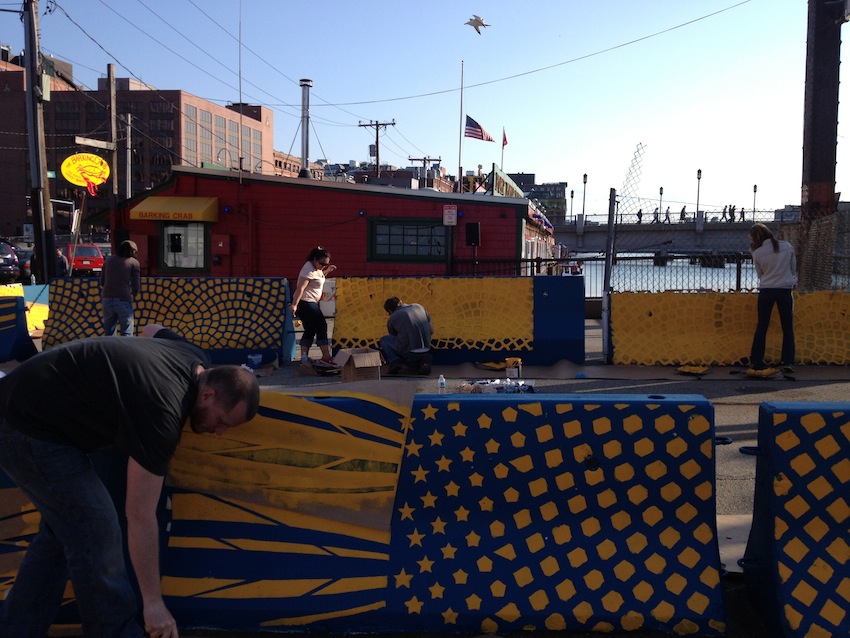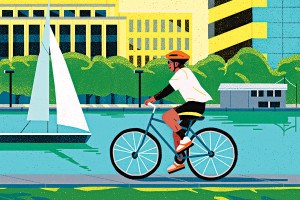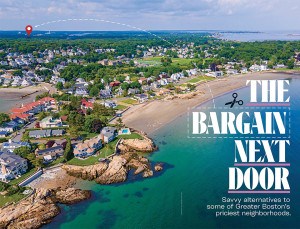City Transforming Public Eyesores Into Works of Art
Following in the footsteps of outdoor art projects in New York City, Boston recently adapted a program to spruce up the massive concrete jersey barriers around the city.
In March, members of the Boston Art Commission put a call out for artists interested in creating a design to paint over the giant slabs along the Northern Avenue and North Washington Street bridges as part of the “ArtBarriers” pilot program. Last month, artists Benjamin Winters and Vaclav Sipla led a group of volunteers in placing and painting their stencil design, handpicked by the commission, onto the concrete barriers.
As part of the project, the artists received $1,000 to complete a final design, produce stencils to translate the design onto the barriers, and oversee the priming and stenciling process with volunteers. Additionally, each artist was reimbursed up to $500 to cover the cost of materials.
Coincidentally, the stencil design that was picked to kick off the pilot program was blue and yellow, the same colors that were featured at the Boston Marathon, even though it was selected prior to the race and subsequent attack. “The blue and yellow people really appreciated after the marathon, and they seemed to enjoy it as we painted,” says Karin Goodfellow, director of the Boston Art Commission.
The concept design was described by the artists as:
A stylized version of a sunflower, created using mathematics and computer drafting software. The sunflower is a plant native to the area, and is often viewed as a symbol of optimism, as the faces of the mature plant face Eastward towards the rising sun. It also contains a natural expression of the golden ratio, thought by some to be relayed to beauty.
Goodfellow says there isn’t a call at this time for additional artists to paint other jersey barriers, but she would like to do more soon, pending approval from the city. The project is similar to an initiative launched by the commission in 2008, which turned drab neighborhood electrical boxes into works of art, called “PaintBox.”
“It’s the same idea of taking everyday objects in the city and making art out of them,” says Goodfellow.



